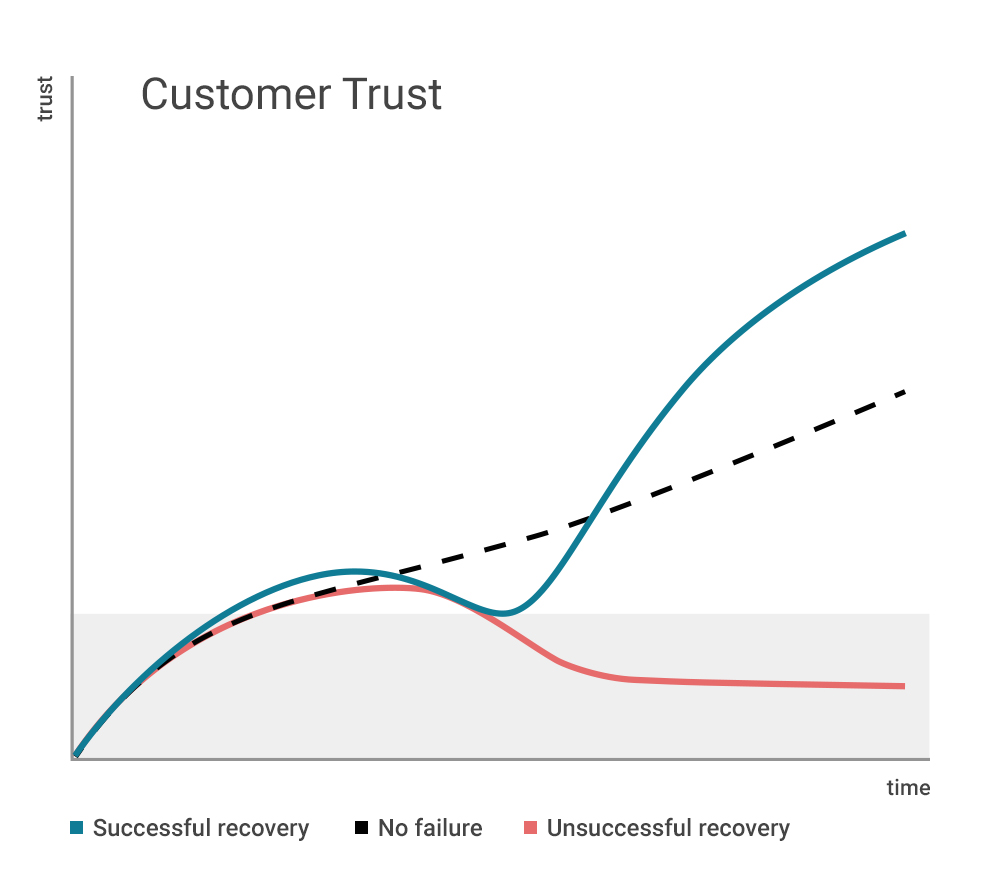A disaster recovery plan will protect your business should the worst happen. Essential for companies of all sizes, a comprehensive disaster plan could mean the difference between a small hiccough that users barely notice, and a frustrating, lengthy period of downtime that has customers heading to your competitors.
In this article, we’ll take you through the strategies and tools you need to build a disaster recovery plan that works for your business.
What is a disaster recovery plan?
A disaster recovery plan is a detailed set of guidelines that outlines how a company might respond to a potential incident. These guidelines typically cover the critical assets of a business, before going into detail on how the company should react to any unexpected disasters.
A huge range of different incidents can affect a company’s ability to serve its customers, and disaster recovery plans should include planned responses for all of these. Plans consider the effects of both man-made disasters and accidental events, setting out a company’s immediate response to all kinds of situations.
Disaster recovery plans cover everything from cyber attacks and system failures, to power outages, equipment failures and natural disasters that are completely outside of the company’s control.
A good disaster plan is designed to center around a company’s capabilities in the face of serious incidents, measuring how quickly and efficiently it would be able to restore its infrastructure should the worst happen.
Often, disasters will mean that companies lose access to essential data, so disaster recovery plans also detail the steps that might need to be taken to restore access to data.

Types of disaster recovery plans
There are several different types of disaster recovery plans that businesses can use to keep themselves and their customers fully protected.
The best option for a company will of course depend on its own specific requirements, and the incident that it faces. Take a look at some of the most common options below.
Data Center Disaster Recovery Plans
Data center disaster recovery plans are designed to ensure the continued service of a data center, and therefore benefit all data center customers as well as the data center itself.
The disaster recovery plans coordinated by data centers are amongst the most robust. They include a number of different security features designed to ward off even the most serious incidents.
These disaster recovery plans are incredibly comprehensive, and include everything from 24/7 monitoring of servers, firewalls and potential threats, to forms of physical security that might be outside the reach of typical companies. There are support personnel on hand to coordinate responses, and backup systems provide complete peace of mind.
Data Back-Up and Recovery
A sudden loss of data can be debilitating for any company, which is why all businesses should have a data back-up and recovery plan as a minimum.
This is a much more basic form of disaster recovery plan, but having one will mean that there is a copy of the company’s crucial data stored offsite that can be accessed if a disaster does happen.
Virtual Disaster Recovery
An additional layer of security becomes available when businesses begin to create virtual disaster recovery plans.
These plans also see data stored offsite, but they go one step further by providing companies with a fully replicated version of IT infrastructure, ready to use should the business’s usual infrastructure become unavailable.
In this type of disaster recovery plan, infrastructure is backed up via cloud servers. It gives teams the option to run their infrastructure from any location.
Particularly beneficial in the event of natural disasters that render a company’s usual HQ unusable, this disaster recovery plan means that virtual environments can be easily restored to any device, within a relatively short space of time.
Disaster Recovery Hot Site
For some organizations, the effects of unplanned downtime would be catastrophic. In these cases, companies might choose to create what’s known as a disaster recovery hot site.
This option sees businesses replicate their entire IT infrastructure in a different location, to provide total protection from the risk of downtime. It goes without saying that this isn’t a cheap option, but for the likes of medical organizations and financial institutions it’s an investment that’s worth making.

What should a disaster recovery plan include?
Good disaster recovery plans tend to include a similar set of features. A plan should set out the responsibilities of different personnel, backup procedures and restoration plans at a minimum. The goals of the plan should also be clearly outlined, to ensure everyone is on the same page when it comes to what the plan is designed to achieve.
Goals
Plans should begin with a clear statement of goals. Ideally, this will outline both the recovery time objective (RTO) and the recovery point objective (RPO).
Responsibilities
If staff are to hit the ground running, they need to know who is responsible for what. Disaster plans should give guidance on this, naming those who must step in if certain personnel are unavailable.
Inventory
The details of all hardware and software assets should be included, along with information on cloud services and how they are used.
Backup procedures
All backup procedures must be outlined, giving staff access to backup locations and recovery processes.
Recovery sites
If a hot site is being used, the disaster recovery plan will of course give details on this. Staff must have all the information they need to allow for a smooth switchover.
Restoration plans
Finally, the recovery plan will guide staff through the processes needed to restore operations following a disaster.
How to build a disaster recovery plan
The impact of a disaster recovery plan depends hugely on the work that goes into creating it. Follow the steps below to design a plan with the specific requirements of your business in mind.
Assess risks
A risk assessment is the perfect starting point for any disaster recovery plan. Begin with a thorough analysis of the potential effects of a number of different incidents, considering everything from more minor challenges to worst case scenarios.
Establish priorities
Determine the critical needs of different departments within the business. Think about what your priorities would be in the face of a serious incident. This will allow you to determine what might constitute an emergency for your company, so that you can plan accordingly.
Set out objectives
Think about the objectives of your disaster recovery plan. List critical operations that the business could not function without, before going into detail on the data, applications and access that make these operations possible.
Write the plan
You should now have all the information you need to create the first draft of your recovery plan. At this point, you can start to bring together lists of critical information and responsibilities, along with inventories, backup procedures and recovery locations.
Test, revise and adapt
Think about how you’ll test your disaster recovery plan. During the testing phase, you’ll have the opportunity to make improvements and adaptations that could enhance the efficiency of your plan and reduce potential downtime even further.

Strategies and tools for a disaster recovery plan
A range of different strategies and tools have been developed to improve the efficiency of disaster recovery plans and strengthen them in the face of all manner of situations.
On-site recovery strategies
On-site strategies cover everything from applications and systems to vital data. Disaster recovery plans will note the resources that support essential processes, planning for situations that might arise should one or more components become unavailable.
Data restoration
Many applications grind to a halt when faced with downtime. In such cases, companies might choose strategies such as data center synchronization, parallel computing or data mirroring.
Internal strategies
Hardware can be configured to run applications from a number of data centers, so that alternative sites can be used if one is affected by a disaster. This setup provides full protection from downtime, but it does come with a considerable price tag.
Concluding
Disaster recovery plans are essential for today’s businesses. But so too is focusing on minimizing risk from the very beginning. Let’s not forget, thorough planning with regard to fault tolerance in IT systems will help to prevent the vast majority of disasters from affecting operations.
Data centers like ours include all the features you need to ensure complete reliability for customers. With our strategic location and 20-year 100% uptime record, you’re far less likely to ever have to use that disaster recovery plan.
Talk to us to find out more about how you can protect yourself from unexpected downtime in the future.







